In Japan, one of the most important aspects of a religious experience is the approach to the place of worship. This path is meant to enable the mind to shift more easily from worldly to spiritual matters as the body moves from secular to sacred space, ultimately culminating in prayer, which usually occurs at the building threshold. Tokyo-based Hiroshi Nakamura embraced this concept for a recent addition to the 17th-century Ueno Toshogu Shrine, which features a new circulation route, punctuated by two small structures that enhance its spiritual atmosphere for visitors—a Shrine Amulet Place of Conferment and a Meditation Pavilion. “It’s not object design but experience design,” he explains.
A strong contrast with Nakamura’s quiet sensibility, the Shinto shrine is a grand, golden edifice at the edge of Tokyo’s Ueno Park. It was erected in 1651 and is dedicated to Tokugawa Ieyasu (1542–1616), the first military commander of the Tokugawa Shogunate, who was deified after his death. Initially, shrine officials asked the architect to create a kiosk where the faithful could receive protective amulets. Nakamura honored this request but also prioritized preserving the existing trees, a signature of his architecture, especially a 600-year-old camphor whose vulnerable roots were being trod upon and weakened by the thousands of annual visitors to the sacred site.
Nakamura began by redirecting foot traffic. He placed an 1,100-square-foot building, where donations are taken for amulets, as well as in exchange for admission to the shrine, near the end of the existing lantern-lined processional. It is defined by stark white plaster walls and a dark-wood roof tilting toward the main shrine, its exposed structure inspired by a layered diamond screen loosely partitioning the main shrine precinct. Running diagonally, similarly stacked rafters point toward two other shrines dedicated to Tokugawa Ieyasu—in one direction toward the Kunozan Toshogu Shrine in Shizuoka Prefecture and in the other towards Nikko Toshogu Shrine in Tochigi Prefecture—conceptually connecting all three. Within Nakamura’s building, the historic screen it references is visible through a large window beyond a light-wood service counter. On the building’s east side, a tile-covered interior wall and floor extend outdoors, creating an exterior walkway, which rings the courtyard that protectively surrounds the camphor tree. Separated by a low metal rail to deter people from walking into the courtyard, this gravel-covered area is for eyes only.
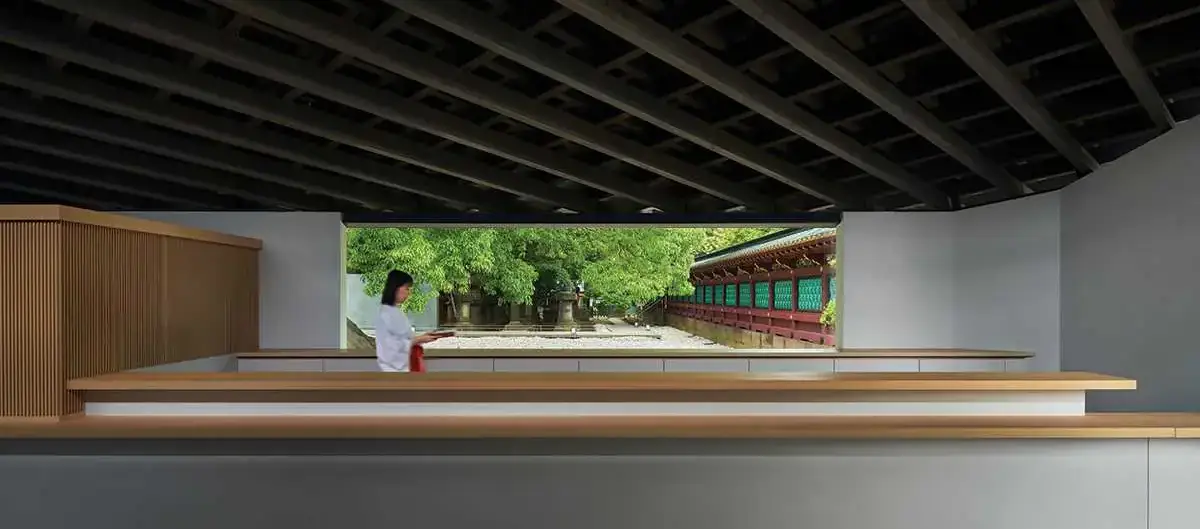
1
Visitors first encounter the Shrine Amulet Place of Conferment (1 & 2). They then advance to the Meditation Pavilion (3 and top of page). Photos © Koji Fujii/Toreal, click to enlarge
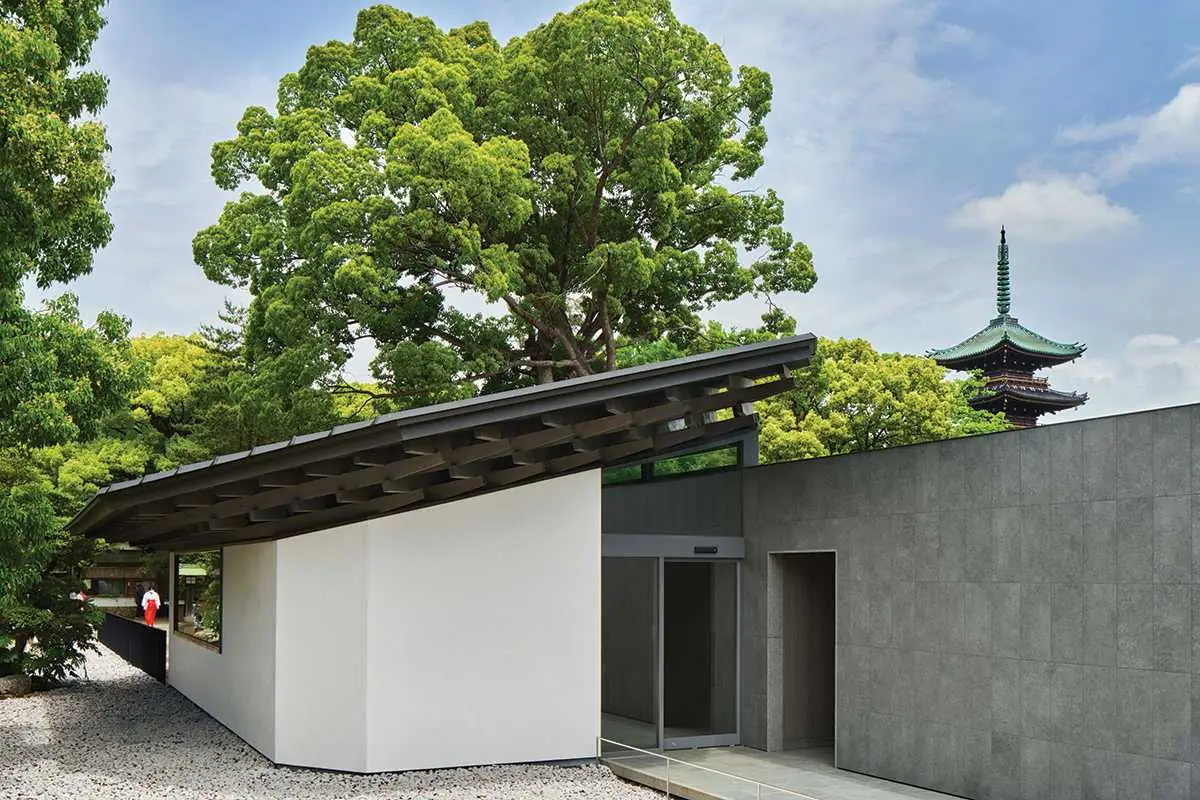
2
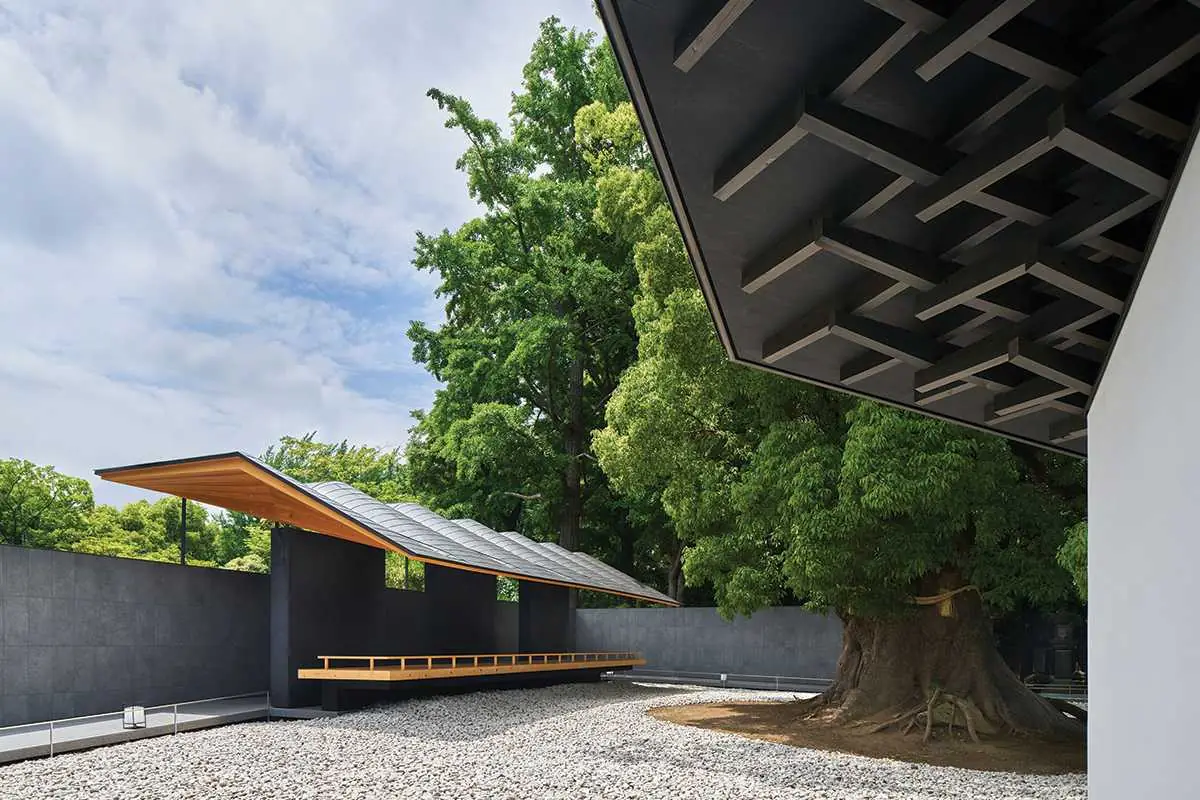
3
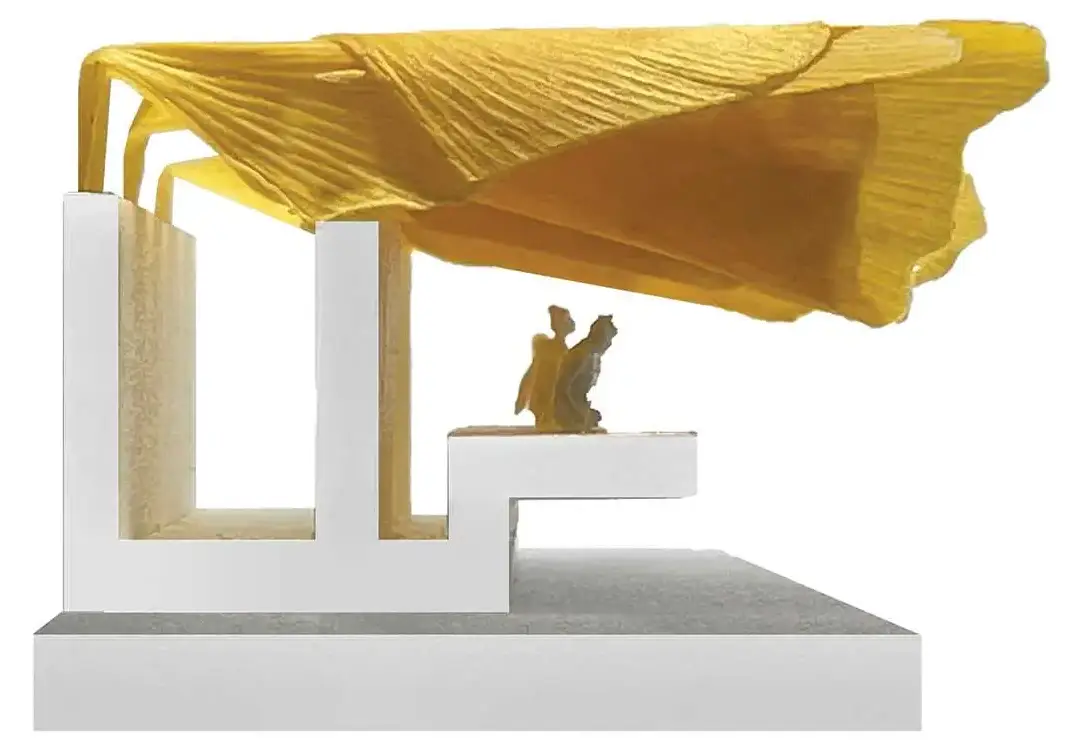
The Meditation Pavilion’s carved roof (top) was inspired by the fanshaped foliage of a once-adjacent gingko tree (above), now just a stump, its wood incorporated into the ceiling. Image courtesy Hiroshi Nakamura & NAP
Farther along the walkway stands the Meditation Pavilion, where visitors may slip off their shoes and sit on its raised wood floor while gazing toward the magnificent tree and the main shrine beyond. “I wanted to make a place to rest and relax,” explains Nakamura. Open on all sides but divided down the middle, along its length, by three solid wall segments, the 420-square-foot structure is sheltered by an undulating roof composed of six conoid shells. Clad with aluminum, the roof incorporates wood salvaged from a 98-foot-high gingko tree previously adjacent to the site. Damaged beyond rehabilitation, it had to be felled during the project’s design phase—much to Nakamura’s chagrin. Celebrating the tree, its wood was sliced into small strips used for the shells, whose form was inspired by the gingko’s fan-shaped foliage. “The roof is like the rebirth of this tree,” comments Nakamura. Steel bars both attach the wood shells together and anchor the roof to the walls at the building’s center and at its outer edge above the walkway. This strategy eliminated the need for view-blocking columns facing the courtyard where the roof cantilevers downward, at an angle recalling the partial closing of the eyes during meditation.
The approach built by Nakamura ends at the shrine’s east entrance. Before that, however, a sliver of an opening in the walkway’s outer wall reveals an unexpected view: the gingko tree’s severed stump, which stands outside of the sacred precinct. Initially, the architect planned to mask it. But then he reconsidered. “We are expecting the tree to revive itself,” he says. As it does, it will continue to enrich Nakamura’s delicate architecture. Fittingly, new green shoots are already sprouting.
Click plan to enlarge
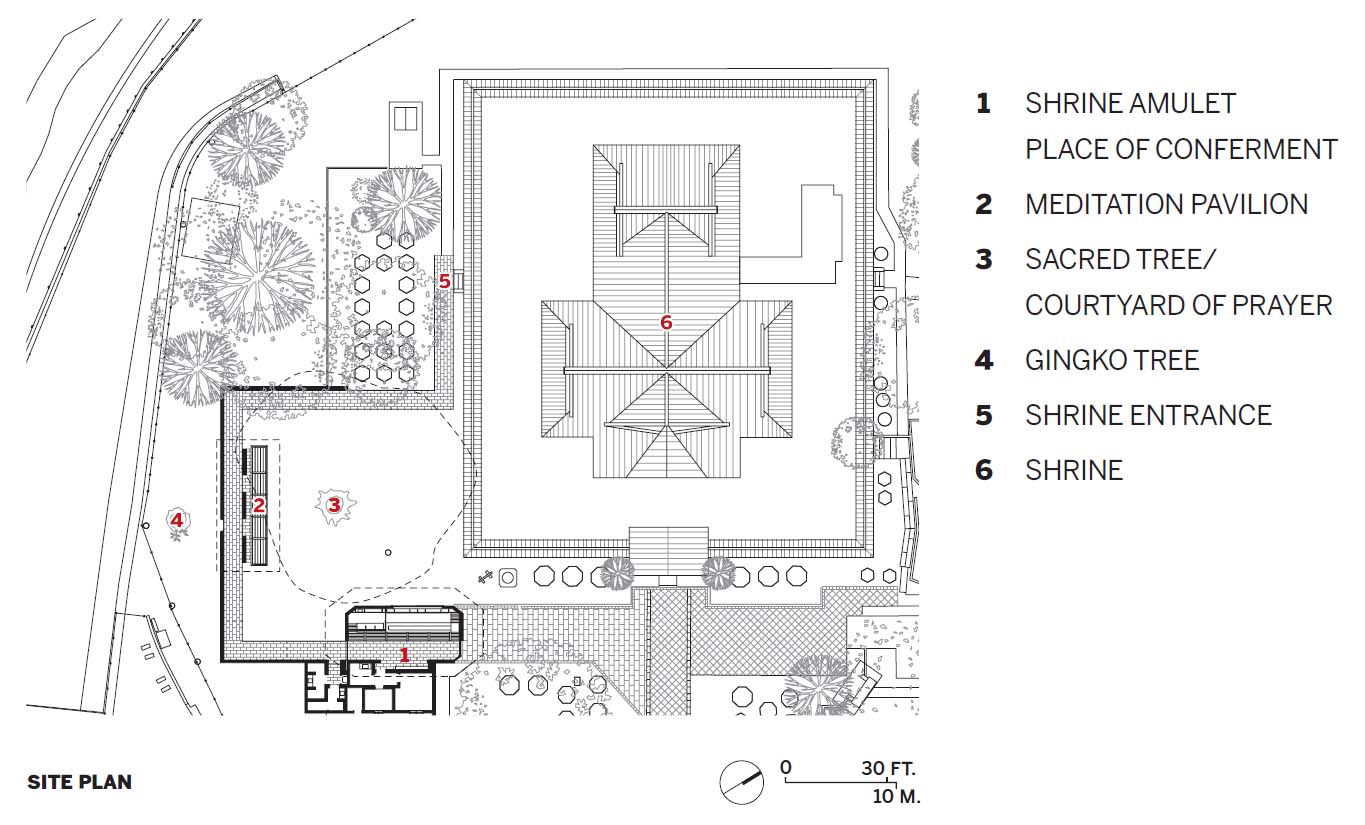
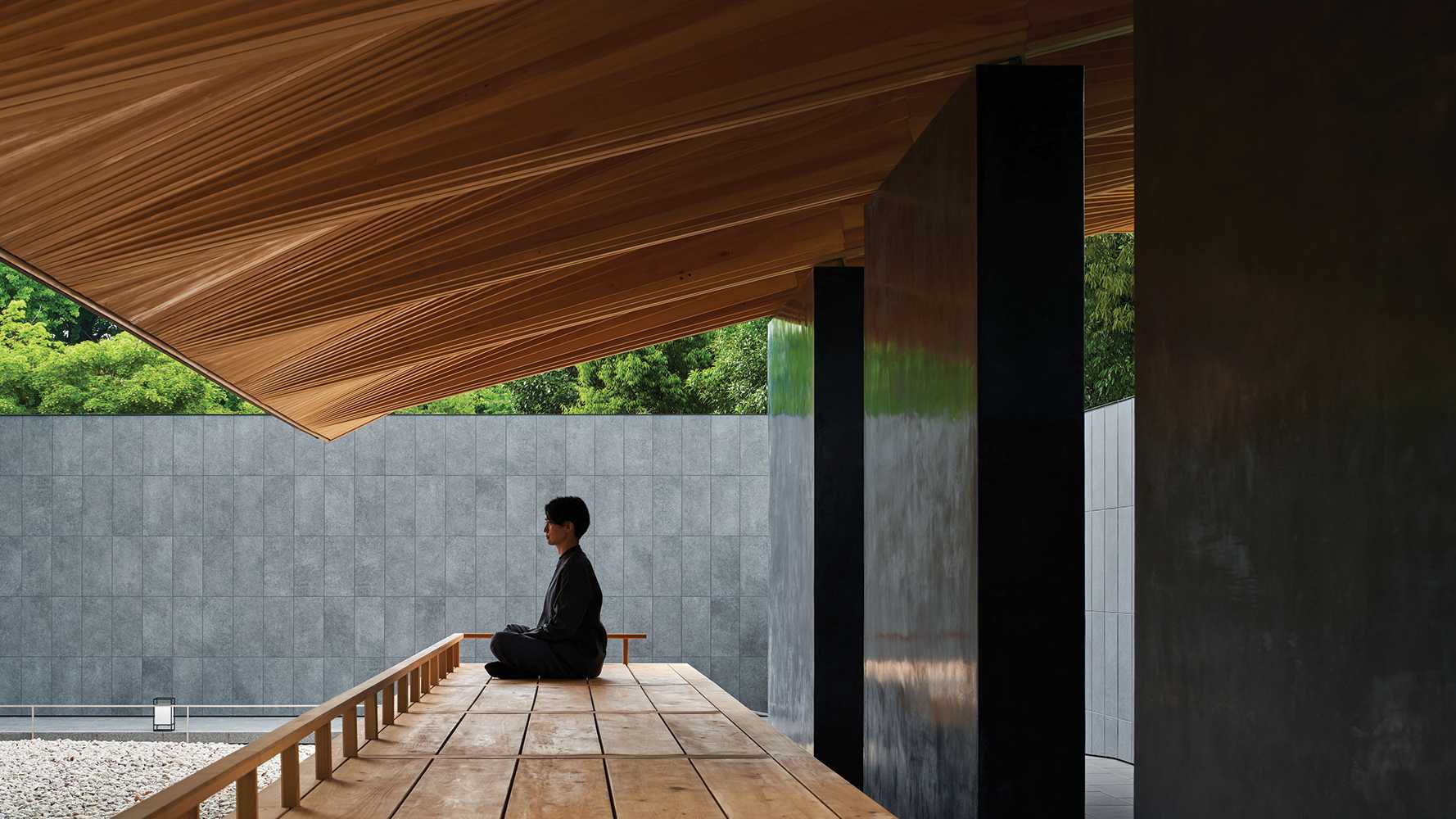


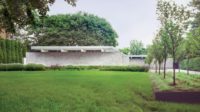
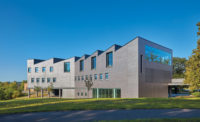
Post a comment to this article
Report Abusive Comment